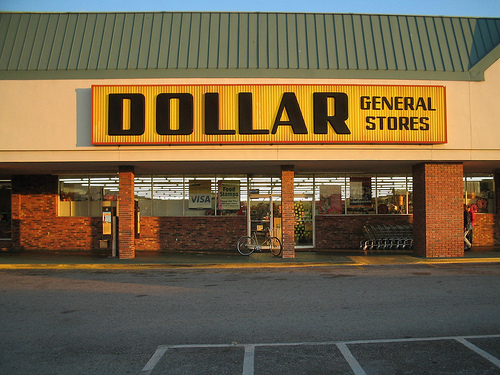Marcus & Millichap: Net-Leased Retailers Expand Reach, See Investor Interest
Certain property types are well-positioned to take advantage of the fact that Americans' personal incomes continue to stagnate, and net-leased properties - including discount retailers, drugstores, quick-service restaurants and even big-box chains - are seeing renewed investor interest in response.
By Nicholas Ziegler, News Editor
Certain property types are well-positioned to take advantage of the otherwise disturbing fact that Americans’ personal incomes continue to stagnate in the slow march to economic recovery. While employment numbers continue to disappoint, consumers are still heading out and spending on real and durable goods. As Commercial Property Executive has reported, real personal consumption — which has been adjusted by the Bureau of Economic Analysis to remove price changes — rose 0.3 percent in April from March.
Dollar stores and discount retailers are leading that push, according to a new report by Marcus & Millichap Real Estate Investment Services Inc., due to their ability to offer low prices and maintain healthy profit margins.
Initially, dollar-store chains such as Dollar General concentrated on entering under-served areas in core markets, the report noted. In the last year, however, these extreme-value retailers have cut into market share held by big-box giants such as Walmart with more aggressive expansion plans and comparable prices … investors should be cognizant of the competitors around their property, given the hyper-competitive nature of the retail market.
Dollar stores have seen quite a bit of expansion of late, and Dollar General is leading the pack. Fourth-quarter 2011 earnings for the company were up 31 percent and the retailer is planning to add 625 new locations this year. With Standard & Poor’s recent ratings upgrade to the investment level, Dollar General is grabbing the attention of single-tenant buyers. The extreme-value retailer offers investors a 15-year triple-net lease versus the 10-year double-net lease associated with most Family Dollar stores, yet it lagged behind in credit rating until recently. Family Dollar will initiate a comparable store expansion strategy, and garner similar levels of investor interest, with 500 store additions in 2012.
Similarly, quick-service restaurants will likely garner some investor interest. Single-tenant investors will see an increase in the amount of franchisee restaurants on the market, as major fast-food chains initiate a wave of re-franchising. A shortage of fast-food listings with national-credit tenants trimmed deal flow by 27 percent over the past year. The median price for QSRs dropped 12 percent to $327 per square foot in the same time frame. First-year returns for corporate-backed assets typically trade in the mid-5 to 7 percent range, while franchisee deals yield from 7 to 8.5 percent depending on location.
While drugstores are not impervious to an economic downturn, the nondiscretionary nature of the retail segment’s product mix supports performance through periods of uncertainty, the report noted. Private-label brands of essential goods and an increase in cheaper, generic drugs make companies such as Walgreens and CVS Caremark strong, long-term investment vehicles. If upheld by the Supreme Court, the Patient Protection and Affordable Care Act will likely result in an increase in prescription drug utilization, as the bill expands insurance coverage to 32 million Americans. This directly affects the bottom line of Walgreens, which receives 65 percent of its revenue from pharmacy sales. Walgreens will bring 200 stores online this year, while CVS opens 300 new units.
And big-box retailers are in a period of transition, moving from large-format stores to a smaller, urban approach. Best Buy underscored the transitional phase, with the closure of 50 big stores and announcement of 100 mobile store additions next year. While Walmart still plans to open about 120 of its larger formats, a significant amount of dark space left by former big-box retailers remains. Developers with a tenant-in-tow drove big-box sales up 22 percent in the last year. An increase in bidding pushed the median price up 23 percent to $133 per square foot, though prices are still considerably lower than just a few years ago. Vacant assets tend to trade on a price-per-square-foot basis, as buyers focus on the ability to charge below-average rents to potential tenants. Cap rates for properties with a credit tenant in place average around 7.5 percent.







You must be logged in to post a comment.